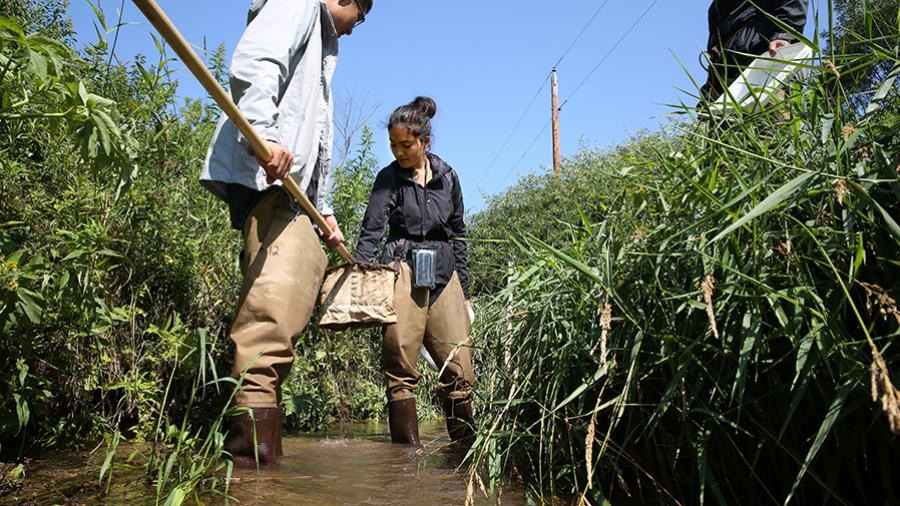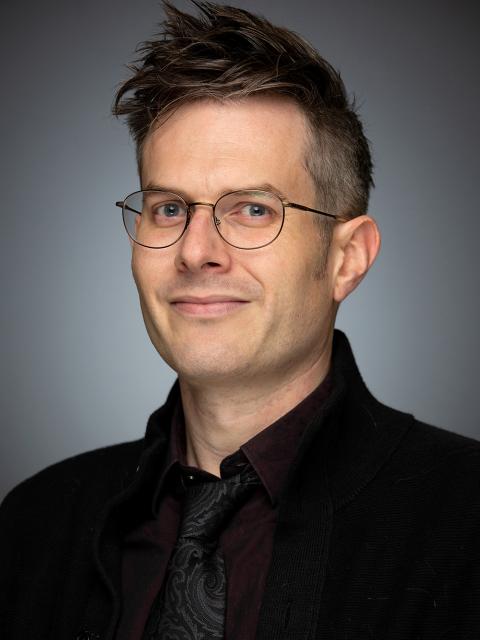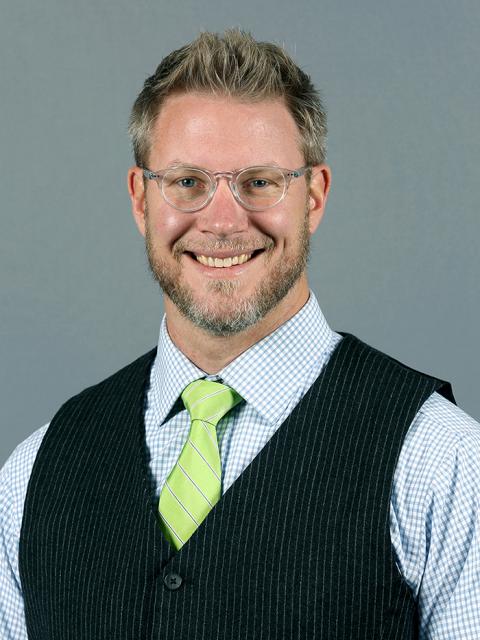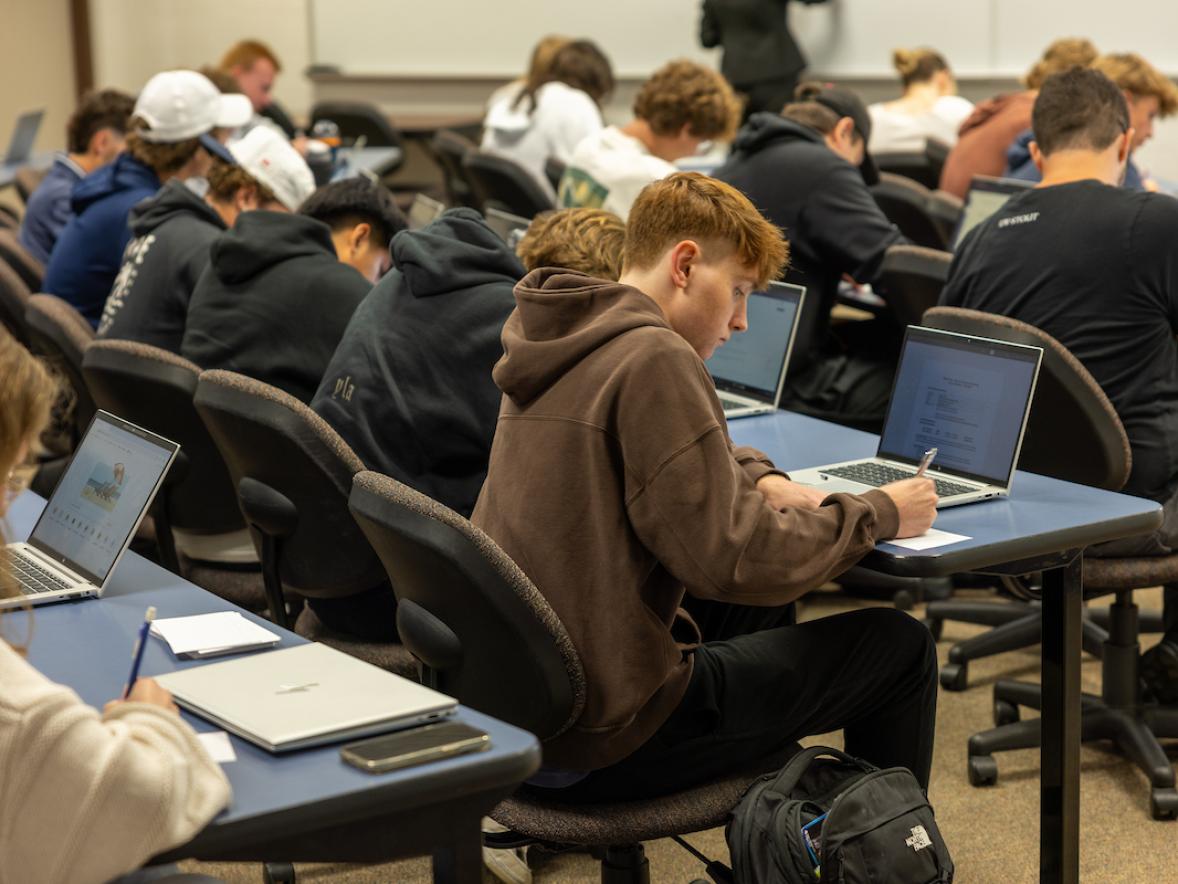Creating family-friendly activities centered on educating about clean water is the concept of a group of Master of Fine Arts in design students at UW-Stout.
The Design Research class, working with the university’s LAKES REU project, recently created the concept of having an outdoor museum in Menomonie that would help educate visitors about the blue-green algae issue on Lake Menomin and, in turn, possibly gain more advocacy about cleaner water.
LAKES, a federally funded research experience for undergraduates, aims to better understand the root causes of phosphorus pollution and solutions while offering undergraduate students the opportunity to participate in cutting-edge research.
Phosphorus is a pernicious and costly environmental pollutant. In areas of intensive agriculture, lakes are toxic at certain times of the year with blue-green algae blooms. Solving the phosphorus pollution problem is not simple. A complex mix of social, economic and environmental factors influences phosphorus use and misuse.

Nels Paulson, UW-Stout associate professor of sociology and co-director of LAKES, spoke to the class. Students then researched the issue and determined four prototypes that might work for an outdoor educational facility.
One idea included using a paddleboat that visitors could use to collect algae to see what it looked like. Another idea was to have interactive signs along the Lakebank Nature Trail that would allow visitors to take a hike as well as learn about water issues. A third idea was to have interactive puzzles along a walk, allowing visitors to answer questions and expand their knowledge on water issues, said class member Matthew Wigdahl, of Menomonie. Wigdahl, in addition to being a UW-Stout graduate student, teaches fifth grade at Oaklawn School.
Terri Stan, of Appleton, also an MFA design student, said the goal would be to use the activities to raise awareness about the lake issues. “I would love it if it would help with tourism,” Stan said.
Other students working on the project were Morgan Brantner, of Menomonie, and Amanda Harder, of Eau Claire.
Erik Evensen, assistant professor of design, taught the class.

“Design research consists of strategies and techniques designers use when tackling creative projects,” Evensen said. “At the graduate level, it usually means using research to dive into complex, interdisciplinary problems, just like the phosphorus pollution issue in the watershed. These students took on this challenge, utilized some intimidating research practices, and executed some really thoughtful and exciting solutions.
“I think this project has a lot of potential for real-world application,” Evensen added. “We're definitely starting a conversation about what this could actually look like here in Menomonie.”
Paulson said he was excited to see the students’ ideas.
“What I like about the idea of an outdoor science museum concept in Menomonie is that it gets the topic of water quality, with the best science behind it, right out there in the open for people to excitedly engage with for free, anytime of the year,” Paulson said. “It can be another big impetus for further efforts to protect and improve our water here and beyond. It can also serve as a really great tourist attraction for downtown Menomonie.”
Paulson said he believes the messages from the museum need to be positive and hopeful, not just educating people about pollution.
“With a hopeful message it can get people more directly engaged with our lakes and rivers, so they can be reminded of their value,” Paulson said. “Making a series of exhibits interactive, thinking of all of Menomonie as a museum and establishing a permanent collaboration between the city and UW-Stout on the topic is a way for our LAKES REU research to have a long-term impact on our community and watershed.”
It would also help in the education of UW-Stout, high school and grade school students, Paulson said.

“Here at UW-Stout the LAKES REU has tried to encourage and expand interdisciplinary thinking, and the museum can provide an avenue for that to continue between art and design, environmental science, applied social science, as well as other programs and schools,” Paulson said.
Menomonie Mayor Randy Knaack said he could see Wolske Bay Island on Lake Menomin as an ideal location for some type of museum.
“Anything having to do with getting information out about the lakes is desirable and a good idea,” Knaack said. “We need people to be educated about it from an early age. The more information there is the better. We need people to be able to go out and enjoy the lakes.”
The LAKES project
LAKES, an eight-week program, features about a dozen students each summer from throughout the U.S. They conduct research on water quality issues affecting the Red Cedar River watershed.
LAKES was reapproved in 2017 for another three years by the National Science Foundation, receiving a $303,000 grant. The first LAKES grant cycle ran from 2014-16.
LAKES REU stands for Linking Applied Knowledge in Environmental Stability Research Experience for Undergraduates.
Along with the student research, LAKES REU collaborates with the U.S. Army Corps of Engineers and the Wisconsin Department of Natural Resources for a related watershed project called the Red Cedar River Water Quality Partnership.
LAKES REU collaborates with other area entities and agencies, including the Tainter/Menomin Lake Improvement Association, Dunn County, Barron County, City of Menomonie, Red Cedar Lakes Association, Chetek Lakes Protection Association and the Big Chetac and Birch Lakes Association.
The watershed includes about 40,000 acres of open water and 4,900 miles of waterways.





